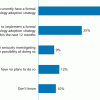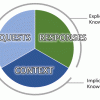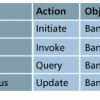Strategic advice to leverage new technologies
Technology is at the heart of nearly every enterprise, enabling new business models and strategies, and serving as the catalyst to industry convergence. Leveraging the right technology can improve business outcomes, providing intelligence and insights that help you make more informed and accurate decisions. From finding patterns in data through data science, to curating relevant insights with data analytics, to the predictive abilities and innumerable applications of AI, to solving challenging business problems with ML, NLP, and knowledge graphs, technology has brought decision-making to a more intelligent level. Keep pace with the technology trends, opportunities, applications, and real-world use cases that will move your organization closer to its transformation and business goals.
Recently Published
DevOps Principles Lead to Architectural Changes
DevOps is more than a set of tools and scripts used to make software operations easier within a software engineering group. DevOps is also a set of principles based on the belief that when an organization improves its deployment frequency, it will find success with a faster time to market, a lower failure rate on new releases, a shorter time between reporting bugs and deploying fixes in production, and a heightened ability to respond to production operations issues. Increased deployment frequency leads to increased profitability due to these successes. As we explore in this Executive Update, when an organization begins an internal DevOps initiative, it will find that it needs architectural changes for its desires to come to fruition.
The healthcare industry has embraced the Internet of Things (IoT) and is making widespread use of sensors in a range of applications and services. One key trend is the development of connected medical devices designed to be worn by patients (or implanted in them) to communicate their biosensor-based readings to wearers, physicians, and other medical personnel via Wi-Fi, cellular, or Bluetooth communications. By analyzing vital patient data and warning about changes in their health conditions or status, connected medical devices can help reduce costs, readmissions, and provide better-quality care to patients overall.
Enterprise Mobility: Part II -- Mobile Technology Adoption Trends
In this Executive Update we present survey findings pertaining to mobile technology adoption trends in the enterprise, the strategies organizations currently use, the strategic importance they place on mobile technology, and the success rate of responding organizations' mobile initiatives to date.
Agile and Personal Perspectives
When you introduce Agile into existing organizations, you regularly get two types of seemingly conflicting results if you ask for employee satisfaction. First you get the satisfaction boost. Once the teams have learned to deliver valuable stuff, they experience the satisfaction of accomplishment. They finally deliver and get feedback from real customers. In most organizations this leads to a significant increase in employee satisfaction. This effect is so consistent that it is one of the very few things I actually promise before starting a transition.
Software Requirements Fail Because They Are Out of Context
In this Executive Update, Tom Grant explores one of the biggest requirements challenges: the lack of information about the business context behind the demand for new software and the adoption of it. Without this context, changing the requirements media is about as meaningful as the choice between reading War and Peace as a novel or as a comic book adaptation. If you don't know anything about Europe in the age of Napoleon, much of War and Peace will make little to no sense, regardless of format.
When No Metrics Is Better Than Some
It's an age-old story, which no one seems to question: any data is better than no data. This idea is absolutely wrong. The misconception may be borne of the accurate assessment that he who has data wins the argument against others who don't. But, we're not talking about using data, or measures, or information for the purpose of "winning" an argument. We're talking about using metrics for the purpose of winning in the battle for improvement. If we use measures properly, we do so to improve our business, organization, or our lives. In this respect, there are many times when having some data is not better than having none.
In current organizations that have a culture where relationships are highly valued and are most often maintained and developed through a lot of face-to-face interaction, the adoption rate for a digital platform for knowledge sharing and information integration is low. Organizations need to promote a culture that motivates staff to increase usage of digital platform for knowledge sharing. Here are some of the ways I would suggest organizations go about responding to that question.
Maintaining Traceability in Second-Generation SOA
This Update describes how to maintain traceability between business-level SOA specifications and implementation artifacts.














